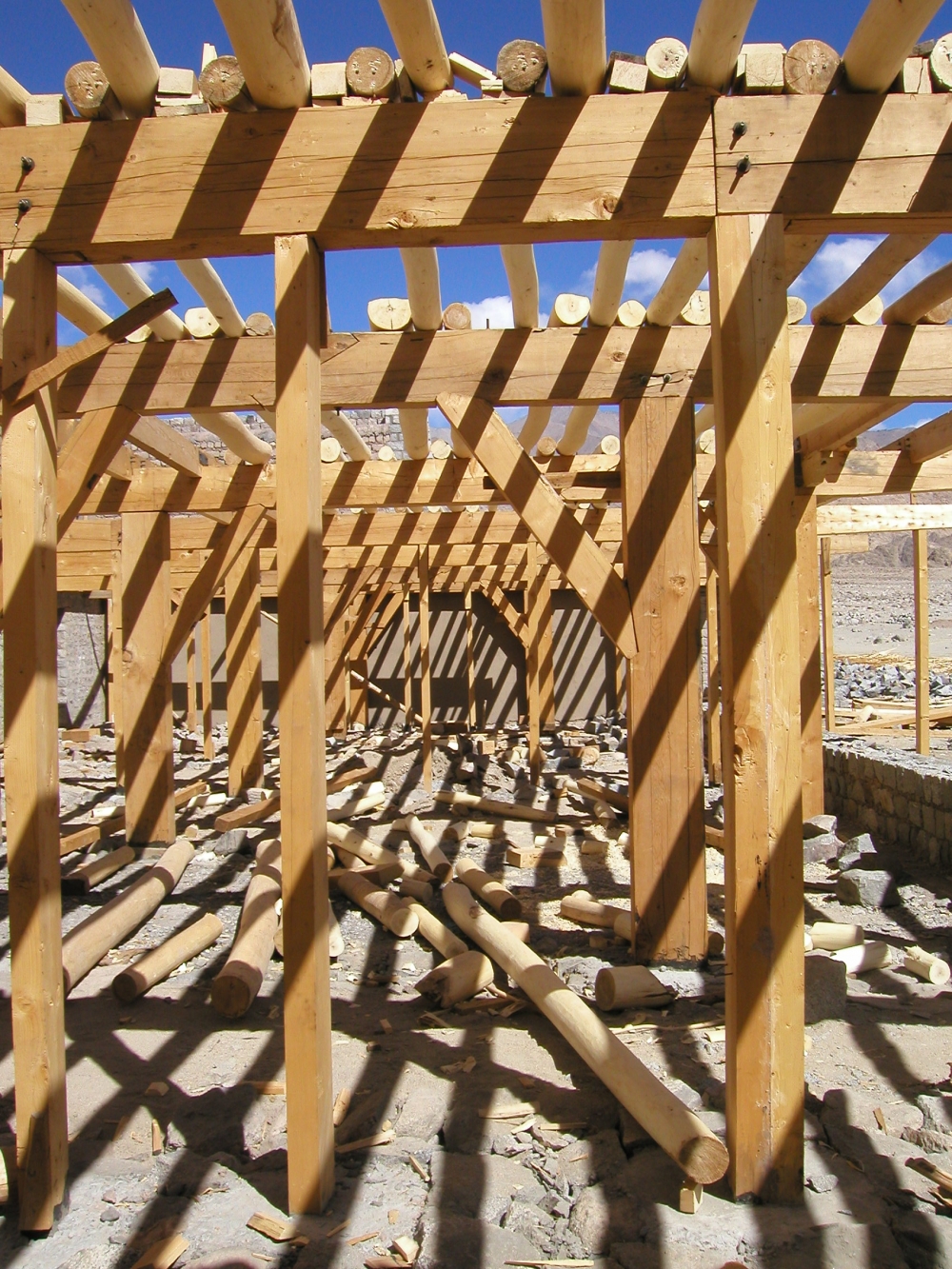Here's some background information on our award winning engineering solutions.
Ventilation Improved Pit Latrines
Traditional dry latrines have been enhanced to ‘VIP latrines’. These eliminate fly and odour problems and – most importantly in a desert environment - do not require water. A double chamber system with an integrated solar flue allows their operation as composting toilets and produces humus that can be used as fertiliser.
Passive Solar Heating
Ladakh is hot in summer and very cold in winter. But even in winter, there is often intense sunlight and the teaching spaces heat quickly thanks to their optimal 30° south-east orientation, combined with fully-glazed solar façades that gather the sun’s energy and store heat in high thermal mass walls.
The Residences are oriented due south, and use Trombe Walls, which are coated externally with dark, heat-absorbing material and are faced with a double layer of glass. Heat is stored in the wall and conducted inwards to the dormitories at night-time.
Gravity Feed Water System
Water is a scarce resource in Ladakh. The system pumps snow-melt water from a depth of about 30m to reservoirs near the top of the site. One reservoir provides drinking water under gravity feed to the school, while the other reservoir provides irrigation water. Water availability is a key aspect of the hygiene promotion programme that forms an important part of the education.
Seismic Design and Safety
The major October 2005 earthquake in adjacent Pakistan was a ‘wake-up call’ concerning such risks in Ladakh. Druk Padma Karpo building structures use timber frames to resist seismic load in the event of an earthquake. The post-2010 mudslide repair work on the school buildings includes seismic strengthening work for enhanced safety.
